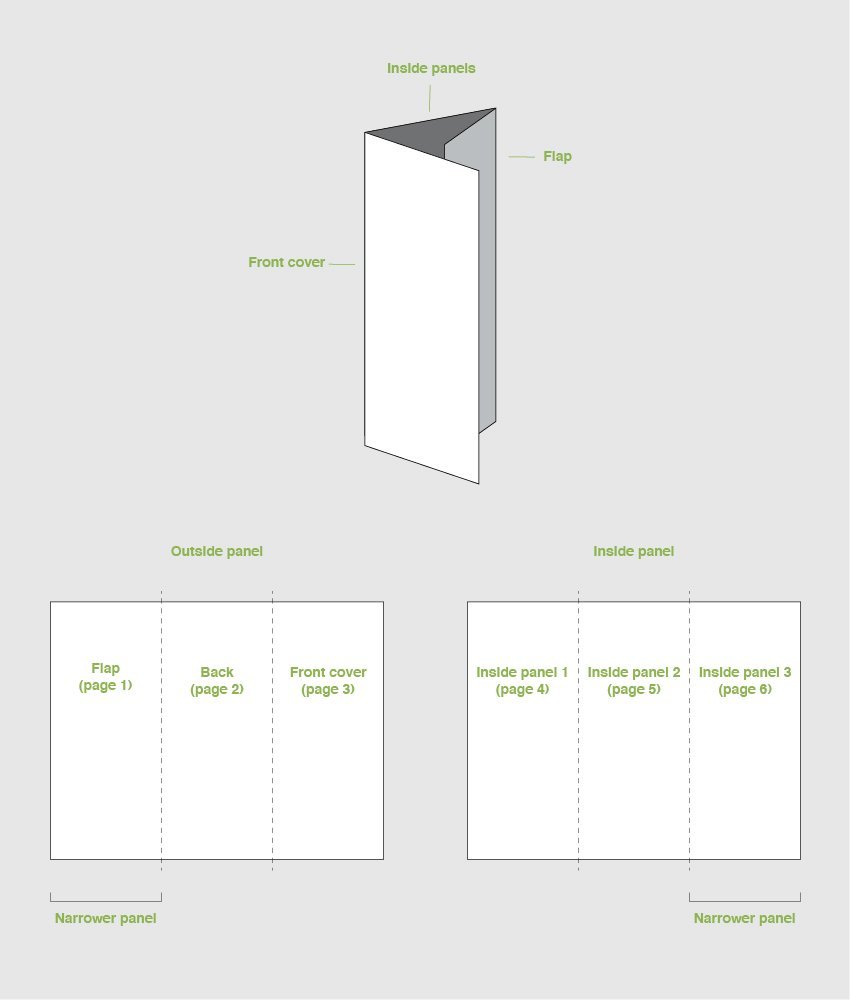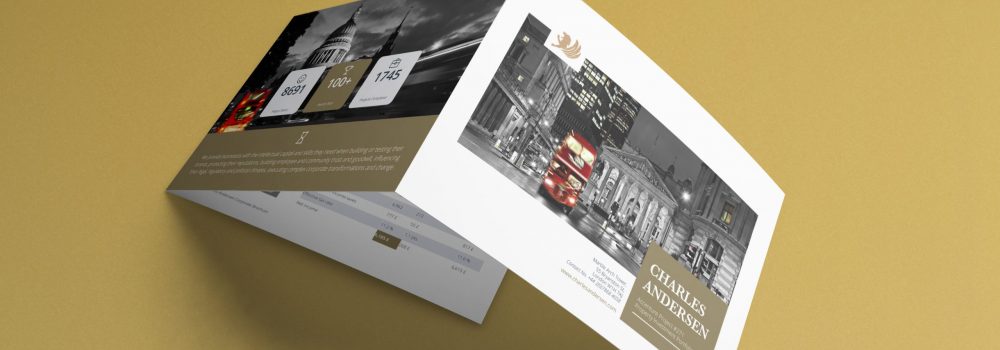What is the Basic Structure of a Brochure?
The marketing industry changes to meet the developing needs of its users and their clients. However, some elements remain as necessary today as they were when first introduced. One such element is the brochure, but even it has changed with the times.
Initially, the brochure was simply a hand-painted piece of paper, looking more like today’s flyers than the brochures we have come to know. Over time it has changed and developed, allowing it to remain relevant in a fast-paced industry.
What remains the same is the brochure’s ability to pass on helpful information to the user in a concise manner that is easily accessed time and again. How a brochure is structure affects its relevancy and ability to convey information effectively. So, how are the best brochures structured?
Brochure Structure Basics
Whether they are marketing services or acting as take-away menus, all brochures start as single blank pieces of paper. Design teams work through a set process with the client to fill this page with suitable images, appropriate written content, headlines, contact information, and other details specific to the purpose of the brochure.
Most brochures have either two or three folds, and thanks to modern printing processes, both the front and page of the paper can be printed. This increases the number of usable panels.
A vital step in the design process is deciding what information needs to go were. There needs to be a natural flow to the information displayed, making it simple for the reader to flow from the opening question or statement to the next steps they need to take.
A classing tri-fold brochure provides six sections in which you can place your information. The meat of your information is found in the inside sections. The outside cover contains enough information to ensure the reader knows who the brochure is from and what it is likely to hold. The cover should also entice the reader to open the brochure and explore further.
The basic structure of the cover should include the company name, logo, an informative or interesting and relatable image, and a small amount of enticing text.
The internal panels should be structured to provide ample information in a way that is not cluttered. Headlines and images should guide the reader through the information and break it up into small manageable chunks.
The final two panels, the back flap and the middle back panel, should contain information that encourages the reader to take the appropriate next steps, whether this is placing an order, finding out more information or visiting your store or website.
Information on these panels might include reviews or testimonials and should definitely include all relevant contact details.
Looking to the Future
The importance of the brochure for marketing and providing information does not seem to be waning; in fact, it appears to be increasing. Given this, we could see an increase in the size of brochures in the coming years. This would mean more complicated folds to keep them manageable and easily transportable.
Regardless of how they change, the basic structure needs to remain focused on the end user’s needs. If brochure designers lose sight of this, then the brochure will stop being helpful, and other forms of marketing will take its place.
Brochure design services
Brochure design services refer to the professional services offered by creative agencies or graphic designers to create high-quality brochures for businesses, organizations, and individuals. These services usually include:
- Concept development: The brochure design company will work with the client to understand their objectives, target audience, and overall message to develop a concept for the brochure.
- Design and layout: The agency will use their expertise in graphic design to create a visually appealing and aesthetically pleasing brochure layout that incorporates the client’s branding and messaging.
- Copywriting and editing: If necessary, the agency can provide copywriting and editing services to ensure that the brochure’s content is clear, concise, and engaging.
- Photography and illustration: The agency may also provide photography and illustration services to create unique and eye-catching visuals that enhance the overall design of the brochure.
- Printing and production management: Once the brochure design is finalized, the agency can oversee the printing and production process to ensure that the final product meets the client’s specifications.
Overall, brochure design services aim to create a high-quality brochure that effectively communicates the client’s message to their target audience while also being visually appealing and engaging.
Brochure Design Services
Creative Harmony offers custom full-service print and digital brochure design services. Our expert creative team has the experience to produce an attractive result-driven brochure for any industry, anytime. A professionally designed brochure delivers your message to potential clients in a visually appealing way that leaves a lasting impression – making it one of the best marketing investments you could ever make for your business. Click here to find out more.
Want a brochure designed by professionals?
Need an award-winning brochure design agency to take care of everything from brochure concepting to printing? No time for those design-it-yourself brochure apps?
We’ll give you a brochure that looks good AND works hard to deliver what you need it to, whether that’s:
- More Sales
- Greater Awareness
- Communicating Your Values
Talk to our expert team of brochure designers today.



